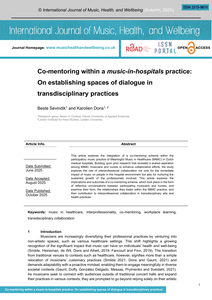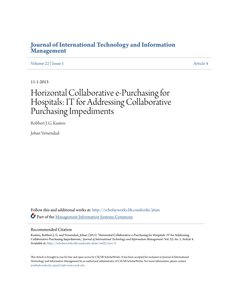Medical imaging practice changed dramatically with the introduction of digital imaging. Although digital imaging has many advantages, it also has made it easier to delete images that are not of diagnostic quality. Mistakes in imaging—from improper patient positioning, patient movement during the examination, and selecting improper equipment—could go undetected when images are deleted. Such an approach would preclude a reject analysis from which valuable lessons could be learned. In the analog days of radiography, saving the rejected films and then analyzing them was common practice among radiographers. In principle, reject analysis can be carried out easier and with better tools (ie, software) in the digital era, provided that rejected images are stored for analysis. Reject analysis and the subsequent lessons learned could reduce the number of repeat images, thus reducing imaging costs and decreasing patient exposure to radiation. The purpose of this study, which was conducted by order of the Dutch Healthcare Inspectorate, was to investigate whether hospitals in the Netherlands store and analyze failed imaging and, if so, to identify the tools used to analyze those images.
DOCUMENT

This article explores the integration of a co-mentoring scheme within the participatory music practice of Meaningful Music in Healthcare (MiMiC) in Dutch medical hospitals. Building upon prior research that revealed a shared aspiration among MiMiC musicians and nurses to enhance collaborative efforts, the study explores the role of interprofessional collaboration not only for the immediate impact of music on people in the hospital environment but also for nurturing the sustained growth of the professionals involved. This article explores the implications and outcomes of a co-mentoring scheme, which took place in the form of reflective conversations between participating musicians and nurses, and examine their form, the relationships they foster within the MiMiC practice, and their contribution to interprofessional collaboration in transdisciplinary arts and health practices.
DOCUMENT

A Magnet-related program has been recently adopted in the Netherlands. Support for staff nurses from nurse middle managers (NMMs) is a key component of such a program. A Bourdieusian ethnographic organizational case study in four hospitals in the Netherlands and the United States (Magnet, Magnet-related and non-Magnet) was conducted to explore NMMs’ supporting role behavior. Bourdieus concepts of habitus, dispositions, field and capital guided the analysis. Eight dispositions constitute NMMs habitus. A caring, clinical and scientific disposition enhance NMMs’ capital in particular organizations-as-fields. Further research is necessary to link Magnet (related) program characteristics to various configurations of dispositions of NMMs habitus.
DOCUMENT

PURPOSE: The purpose of the study is (a) to describe care needs derived from records of patients in Dutch hospitals, and (b) to evaluate whether nurses employed the NANDA-I classification to formulate patients' care needs.METHODS: A stratified cross-sectional random-sampling nursing documentation audit was conducted employing the D-Catch instrument in 10 hospitals comprising 37 wards.FINDINGS: The most prevalent nursing diagnoses were acute pain, nausea, fatigue, and risk for impaired skin integrity.CONCLUSIONS: Most care needs were determined in physiological health patterns and few in psychosocial patterns.IMPLICATIONS FOR NURSING PRACTICE: To perform effective interventions leading to high-quality nursing-sensitive outcomes, nurses should also diagnose patients' care needs in the health management, value-belief, and coping stress patterns.
DOCUMENT
Abstract—A survey about radiation protection in pediatric radiology was conducted among 22 general and seven children’s hospitals in the Netherlands. Questions concerned, for example, child protocols used for CT, fluoroscopy and x-ray imaging, number of images and scans made, radiation doses and measures taken to reduce these, special tools used for children, and quality assurance issues. The answers received from 27 hospitals indicate that radiation protection practices differ considerably between general and children’s hospitals but also between the respective general and children’s hospitals. It is recommended that hospitals consult each other to come up with more uniform best practices. Few hospitals were able to supply doses that can be compared to the national Diagnostic Reference Levels (DRLs). The ones that could be compared exceeded the DRLs in one in five cases, which is more than was expected beforehand.
LINK
Horizontal collaborative purchasing (HCP) has often been cited as a way for hospitals to address the challenges of the rising healthcare costs. However, hospitals do not seem to utilize horizontal collaborative purchasing on any large scale, and recent initiatives have had mixed results. Focusing on Dutch hospitals, in this paper we present major impediments for collaborative purchasing, resulting in a first component of our proposed electronic horizontal collaborative purchasing model for hospitals; as a second component it contains a collaborative purchasing typology. A first validation round with hospital purchasing professionals, described separately in Kusters and Versendaal (2011), confirmed four applicable purchasing types and fourteen salient collaborative purchasing impediments. The model is operationalized by including possible information technology (IT) solutions that address the specific fourteen impediments. This model is validated through methodological triangulation of four different validation techniques. We conclude that IT has the potential to support, or overcome, the impediments of HCP. The validation also reveals the need to distinguish between more processrelated, as opposed to social-related, obstacles; the immediate potential for IT solutions is greater for the process-related impediments. Ultimately, we conclude that the collaborative epurchasing model (e-HCP) and implementation roadmap can be used by healthcare consortia, branche organizations, partnering healthcare institutes and multi-site healthcare institutes as a means to help identifying strategies to initiate, manage and evaluate collaborative purchasing practices
DOCUMENT

Diagnostic reference levels (DRLs) for medical x-ray procedures are being implemented currently in the Netherlands. By order of the Dutch Healthcare Inspectorate, a survey has been conducted among 20 Dutch hospitals to investigate the level of implementation of the Dutch DRLs in current radiological practice. It turns out that hospitals are either well underway in implementing the DRLs or have already done so. However, the DRLs have usually not yet been incorporated in the QAsystem of the department nor in the treatment protocols. It was shown that the amount of radiation used, as far as it was indicated by the hospitals, usually remains below the DRLs. A procedure for comparing dose levels to the DRLs has been prescribed but is not Always followed in practice. This is especially difficult in the case of children, as most general hospitals receive few children. Health Phys. 108(4):462–464; 2015
DOCUMENT

The benefits of collaborative purchasing are many, yet in the healthcare sector, in particular at hospitals, it is still uncommon. In this paper we identify major impediments for collaborative purchasing, resulting in a first component of our proposed collaborative e-purchasing model for hospitals; as a second component it contains a collaborative purchasing typology. After analysis of a first validation round with hospital purchasing professionals, the results show four applicable purchasing types and fourteen collaborative purchasing impediments that are perceived as important for hospitals. The model is further extended by possible IT solutions, identified by experts, addressing the specific fourteen impediments. We conclude that the collaborative e-purchasing model can be used by healthcare consortia, branche organizations, partnering healthcare institutes and multi-site healthcare institutes as a means to help identifying strategies to initiate, manage and evaluate collaborative purchasing practices.
DOCUMENT

INTRODUCTION: In the Netherlands, hospitals have difficulty in implementing the formal procedure of comparing radiation dose values to Diagnostic Reference Levels (DRLs).METHODS: To support the hospitals, train radiography students, and carry out a nationwide dose survey, diagnostic radiography students performed 125 DRL comparisons for nine different procedures in 29 radiology departments. Students were instructed at three Dutch Universities of Applied Sciences with a radiography programme and supervised by medical physicists from the participating hospitals.RESULTS: After a pilot study in the western part of the country in eight hospitals, this study was enlarged to involve 21 hospitals from all over the Netherlands. The 86 obtained dose comparisons fall below the DRLs in 97% of all cases. This very high compliance may have been enhanced by the voluntary participation of hospitals that are confident about their performance.CONCLUSION: The results indicate that the current DRLs that were not based on a national survey, may need to be updated, sometimes to half their current value. For chest and pelvis examinations the DRLs could be lowered from 12 and 300 μGy·m 2 to the 75-percentile values found in this study of 5,9 and 188 μGy·m 2, respectively.
DOCUMENT
Abstract—A survey was conducted among 20 Dutch hospitals about radiation protection for interventional fluoroscopy. This was a follow-up of a previous study in 2007 that led to several recommendations for radiation protection for interventional fluoroscopy. The results indicate that most recommendations have been followed. However, radiation-induced complications from interventional procedures are still often not recorded in the appropriate register. Furthermore, even though professionals with appropriate training in radiation protection are usually involved in interventional procedures, this often is not the case when these procedures are carried out outside the radiology department. Although this involvement is not required by Dutch law, it is recommended to have radiation protection professionals present more often at interventional procedures. Further improvements in radiation protection for interventional fluoroscopy may come from a comparison of dose-reducing practices among hospitals, the introduction of diagnostic reference levels for interventional procedures, and a more thorough form of screening and follow-up of patients
DOCUMENT
